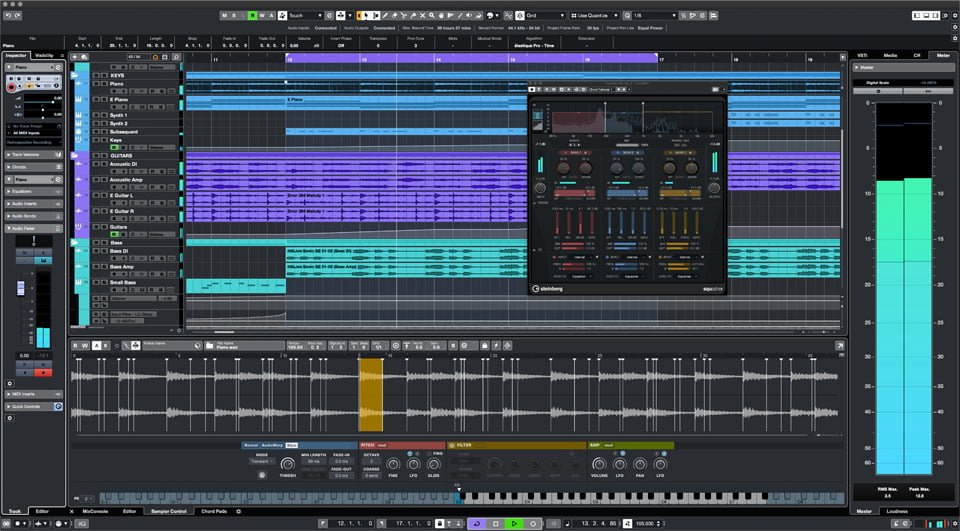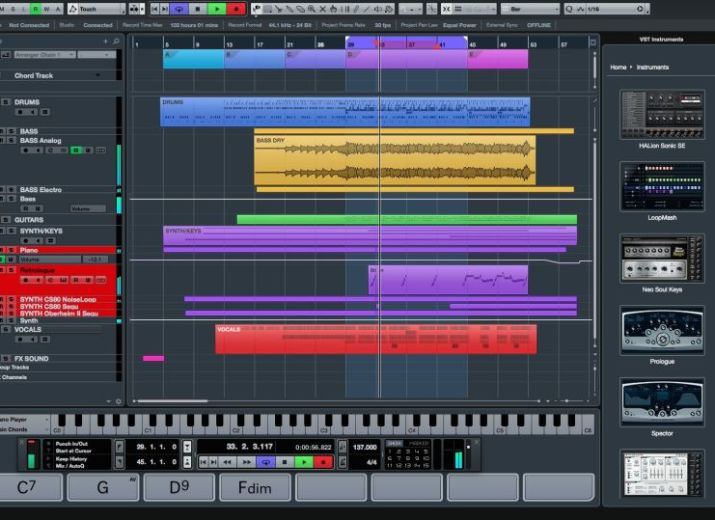

You can, therefore, really focus in to find a specific ‘problem’ frequency or hear what your shelf or cut filters are doing at the top/low end as you make adjustments. With this enabled, move any control or drag a frequency band node in the display, and Frequency EQ solos just that band. Second, and really useful when you’re trying to identify a specific frequency to adjust, is the Auto Listen for Filters option (toggled on/off via the speaker icon, located top right). And, if you want, you can drag an existing colour-coded note along the keyboard to change the band’s centre frequency. Notes that most closely match the centre frequency of a specific EQ band appear colour-coded hover the mouse over these and you get both note pitch and frequency data in a small pop-up panel. First, if you click on the small keyboard icon (located mid-left), a piano keyboard graphic appears under the spectrum display. So far, so standard, but as you move the cursor within the spectrum display, Frequency EQ also gives you real-time data: the frequency, gain and musical pitch of the current cursor position are all displayed, which can be very useful.įrequency EQ also offers two further bits of ‘assistance’. In the upper half of the display is a real-time spectrum curve (or histogram, if you prefer) with variable-time averaging and peak hold, and a colour-coded EQ curve for the active EQ bands is also displayed.

They can also be switched on/off individually. In the latter two modes, each band offers you two sets of controls to apply different EQ settings to each channel. If you’re working with a stereo source, all eight bands can be used in Stereo (the default), mid-sides or left-right modes. This can be a great way to add a nice bit of heft to a bass/kick sound while rolling off unwanted rumbles lower down the spectrum. The cut filters also benefit from a Q control, which can add resonance (an EQ hump) at the turnover frequency. All bands feature low-shelf, peak, high-shelf and notch options, while bands one and eight also offer cut filters, with slopes all the way up to a whopping 96dB per octave - that’s very handy if you want to filter off everything below/above a very specific frequency. Setting The Toneīands one and eight offer a selection of cut filters as well as the low-shelf, peak, high-shelf and notch options.In the lower half of the display, the eight EQ bands can be toggled on/off individually. And as we’ll see in a minute, the UI also includes some very neat features that can assist you in making your EQ decisions. So while Frequency EQ can most certainly be used for general tone-shaping duties, it’s also capable of much more surgical operations. There are eight available frequency bands and you have the choice, on a per-band basis, of mid-sides or left-right EQ. All the previous EQ options are retained but Frequency EQ is a powerful plug-in, which represents a considerable step up. One of the excellent new features Steinberg introduced in Cubase Pro 9 is a brand-new EQ plug-in called Frequency EQ. Frequency EQ: eight bands, with flexible filter choices, mid-sides and left-right options in each band, and very useful visual and audio-based feedback.Ĭubase 9 Pro’s Frequency EQ plug-in can do everything from gentle tone shaping to delicate mid-sides surgery.


 0 kommentar(er)
0 kommentar(er)
